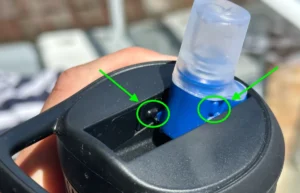For many years, a couple Nalgene Bottles have been a staple on my backpacking trips. They keep me hydrated, act as storage for small items I don’t want to lose, and even keep me warm when filled with hot water.
While I used Nalgene bottles in the past with hot water I recently did a deep dive into whether or not boiling water is good for your Nalgene or not. Most people are surprised to hear that Nalgene bottles can easily handle boiling water without warping.
Nalgene's are tanks when it comes to different temperature ranges. They can handle very hot and very cold temperatures but what is the exact temperature range that a Nalgene Bottle can handle before breaking?
Standard Nalgene Bottles can handle temperatures as low as -40°F/-40ºC and as high as 201°/93ºC regularly. Temperatures higher than 230°F/110ºC, however, may soften the plastic and lead to a distorted or misshapen bottle.
Ultralite HDPE Bottles are more sensitive to high temperatures and begin to soften around 153°F/67ºC but can still handle boiling water if you are careful not to apply pressure to them while they are hot.
Through trial and error (plus my research into exactly what Nalgene bottles are made from and their melting points) I learned what temperatures my Nalgene Bottles could handle.
While they sometimes seem indestructible, there are a variety of stories out there of people who have melted their Nalgene bottles – mainly from leaving them too close to a campfire.
What Temperatures Are Important To Consider

With plastics, temperature ranges are defined in many different ways.
As far as reusable water bottles go, the most important measurements are the operating temperature, softening point, and melting point.
The continuous service temperature, or operating temperature, is the temperature range a plastic can handle over an extended time without being damaged. This is the most important range when talking about normal, everyday use.
The Vicat softening point is the temperature where a plastic begins to soften and become more malleable. Bottles that reach their softening point are likely to distort or deform when pressure is applied to them but they may hold their shape if not outside forces push strongly on them.
And finally, the melting point of a plastic is the temperature where your bottle will be immediately and irreversibly damaged. Luckily, the situations where your bottle could reach this point are almost nonexistent (except those campfires we talked about).
What Temperatures Can Nalgene Bottles Handle?
Nalgene uses four different types of plastic for its water bottles. The temperature range your bottle can handle depends almost entirely on what your bottle is made of.
| Material of Nalgene Bottle | Min Operating Temperature | Max Operating Temperature | Softening Point | Melting Point |
| Polycarbonate (pre 2008) | -40°C (-40°F) | 115°C (239°F) | 145°C (293°F) | 288°C (550°F) |
| Tritan (after 2008) | not provided by Eastman | 94°C (201°F) | 110°C (230°F) | 260°C (500°F) |
| Tritan Renew (Nalgene Sustain – after 2020) | not provided by Eastman | 94°C (201°F) | 110°C (230°F) | 260°C (500°F) |
| Ultralite HDPE | -30°C (-22°F) | 45°C (113°F) | 67°C (153°F) | 130°C (266°F) |
If you have a clear colored Nalgene bottle purchased after 2008 then you almost certainly have either a Tritan plastic bottle or a Tritan Renew plastic bottle – both which have the same temperature ranges.
If you have a translucent white bottle then you likely have an Ultralite HDPE (also known as UVPE) plastic bottle.
How Do Nalgene Bottles Handle Cold?
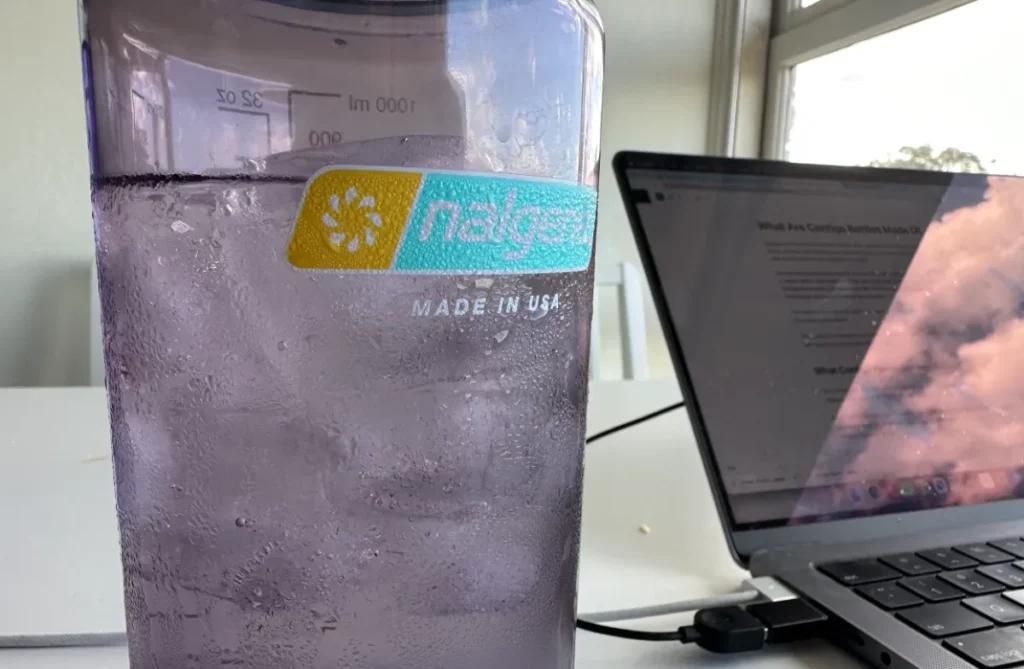
Nalgene Bottles are safe to use at very low temperatures. Iced water and drinks are going to be completely fine in them.
It’s even fine to freeze water in them — your freezer isn’t anywhere near cold enough to cause damage. Just be sure to leave room for ice to expand or your bottle may crack from the pressure.
FUN FACT: Nalgene will replace almost any broken water bottle free of charge. One of the few things that isn't covered is damage by freezing, so be careful not to overfill it.
To drop below any of the minimum operating temperatures, you’d need to be in Arctic conditions or have access to liquid nitrogen.
How Do Nalgene Bottles Handle Heat?
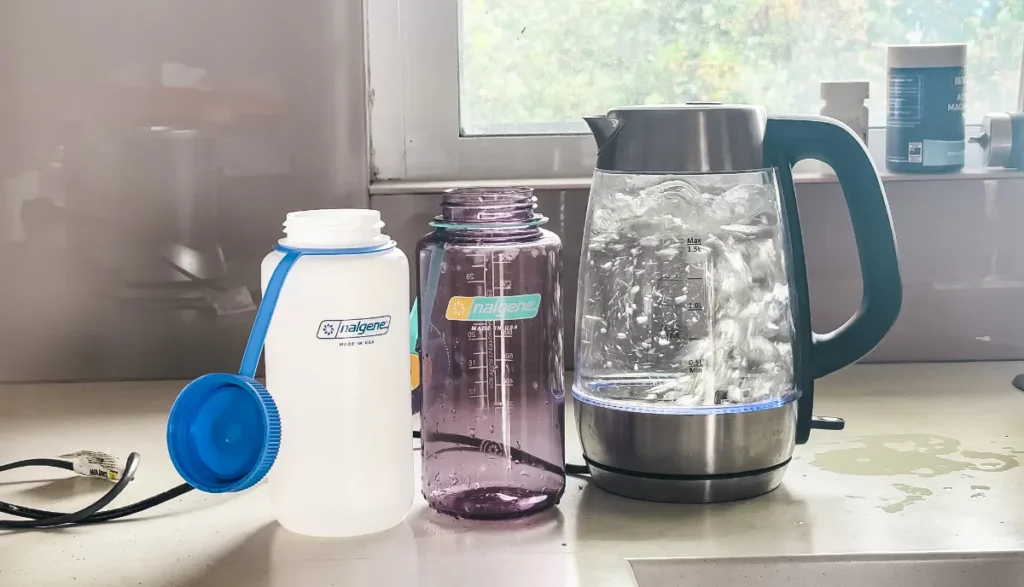
Hot or boiling water won’t immediately damage Tritan, Tritan Renew, or polycarbonate (pre-2008) bottles, but may make more chemicals leach from the plastic.
Ideally you shouldn’t drink from a Nalgene Bottle that contains (or contained) hot or boiling water until it’s thoroughly washed and refilled with fresh water.
There are some studies that show even Tritan plastic can leach some chemicals – though these are small studies with a clear conflict of interest (the authors owned a competing plastics company) so should be taken with a grain of salt.
Overall Nalgene bottles are safe to drink from. I just personally like to avoid any unnecessary risk and to me boiling water and the potential it has to leach chemicals into the water is an unnecessary risk. Sure fill your bottle with boiling water and use it as a hot water bottle – just don't drink that particular water.
It’s still fine to fill a (non-HDPE) Nalgene Bottle with boiling water (give it a minute or two to cool off first) to stick in your sleeping bag or under your jacket for warmth when backpacking or camping.

I personally filled up my regular Nalgene bottle with boiling water with boiling water and noticed no noticeable difference in the softness of the bottle. The plastic remained incredibly hard.
But be sure to give the bottle a thorough wash before drinking from it again.
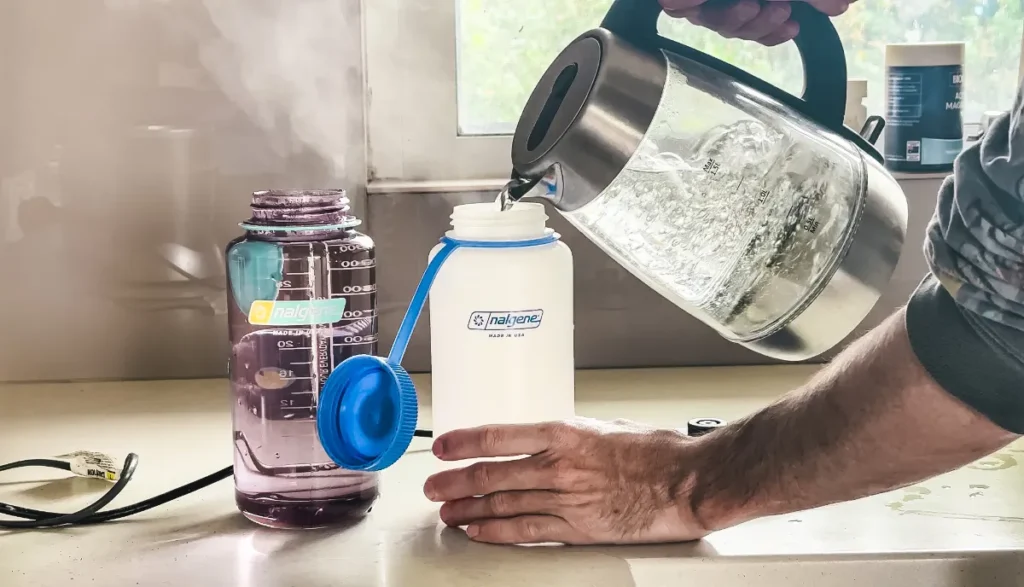
Ultralite Nalgene Bottles are the most sensitive to heat, but can still comfortably handle temperatures as high as 113°F before melting.
But you will notice they begin to go super soft (like dangerously soft) when filled with boiling water.
I would NOT recommend filling up an Ultralite Nalgene bottle with boiling water as when I did that to mine it became dangerously soft.

I could easily deform the bottle with and light squeeze with my fingers.
The troubling thing was the bottle would stay deformed for a few seconds after I pulled my fingers away.
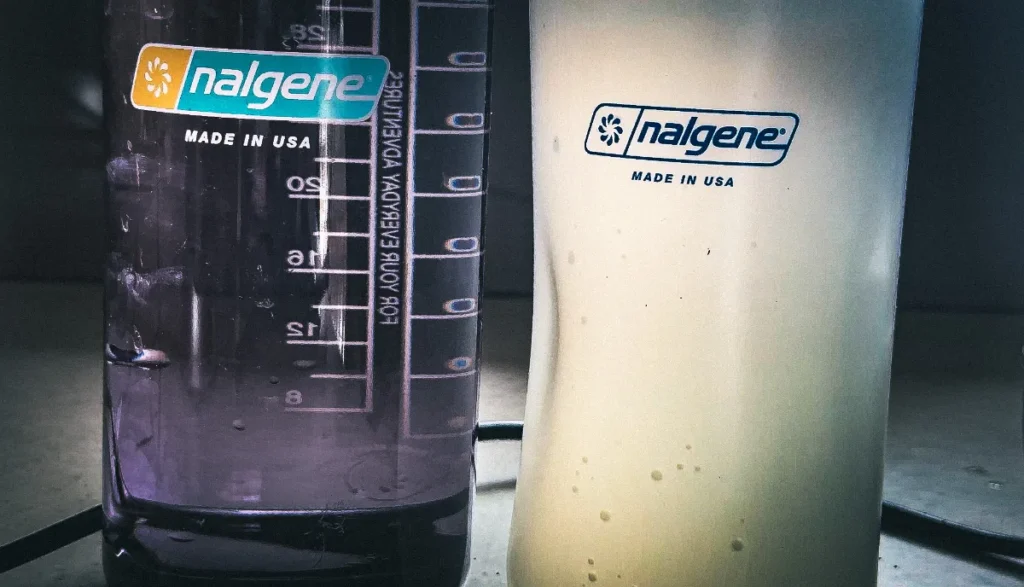
Ultimately it went back to its original shape but I could definitely see it permanently deforming if I applied more pressure.
Just don’t take one into a sauna or hiking through Death Valley in the middle of summer, unless it’s filled with ice cold water and stays relatively full to keep the bottle's surface temperature down.
Still, you’re better off using a Tritan Bottle in extreme heat as opposed to the HDPE Ultralite bottles.
What About The Lids?
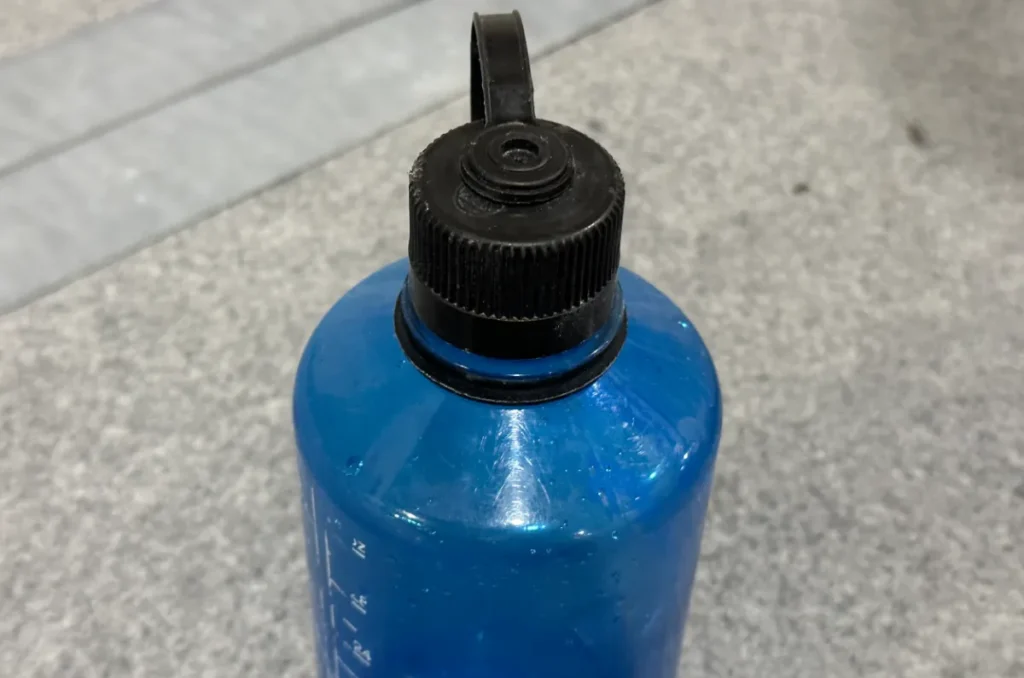
Nalgene lids are made of low-density polyethylene (LDPE), which is less resistant to temperature than Tritan, polycarbonate, and HDPE.
Low temperatures remain a non-issue, but Nalgene lids are more likely to be damaged by heat than the bottles themselves.
But in reality, it’s not much of a problem.
The highest temperature your bottle is likely to face is being filled with boiling water. Unless you then sit your bottle upside down, the lid won’t be continuously exposed to the extreme heat.
If your lid does happen to be damaged by heat, Nalgene is very generous about replacing damaged bottles.



